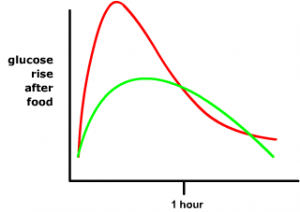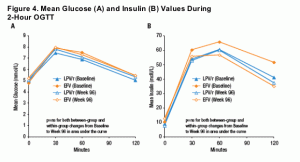Blood sugar levels after eating

Many foods that you eat contain the sugar vital to your body’s normal function. Sweets, such as candy or cake contain processed sugar. Fruit contains natural sugar. The body converts carbohydrates into sugar. When you ingest sugar from any of these sources, it enters your bloodstream and becomes what is known as blood glucose or blood sugar levels after eating.
You can test your blood glucose level by placing a small amount of blood on a small strip of treated paper that you then insert into a glucose meter. Normal blood sugar levels are between 70 mg/dl to 120 mg/dl (milligrams of blood glucose per deciliter of blood).
Hyperglycemia is when your blood glucose levels are higher than normal. Blood glucose levels below normal can cause a condition called hypoglycemia.
When sugar enters your bloodstream, your pancreas is triggered to produce a hormone called insulin. Insulin bonds with the blood glucose, allowing it to feed your body the energy that it needs. The pancreas constantly monitors your blood glucose levels and produces enough insulin to fuel your body and keep your blood glucose levels in the normal range. This all effects your blood glucose levels after eating.
There are several activities that can cause normal fluctuations outside of the normal range in your blood glucose. The most common are eating a meal, exercise and stress.
When you eat a meal that contains any sugar source, your body is flooded with blood glucose. The pancreas is unable to produce enough insulin to accommodate the sugar, and so your blood glucose levels will rise above a normal level for approximately one to two hours. It is possible that during that first hour, your blood glucose level could be as high as 180 mg/dl.
Your blood glucose levels after eating will vary from what you eat, what time of day it is as well as what types of food you eat. By avoiding foods that are high in sugar and carbohydrates you can take care of your blood glucose levels.



